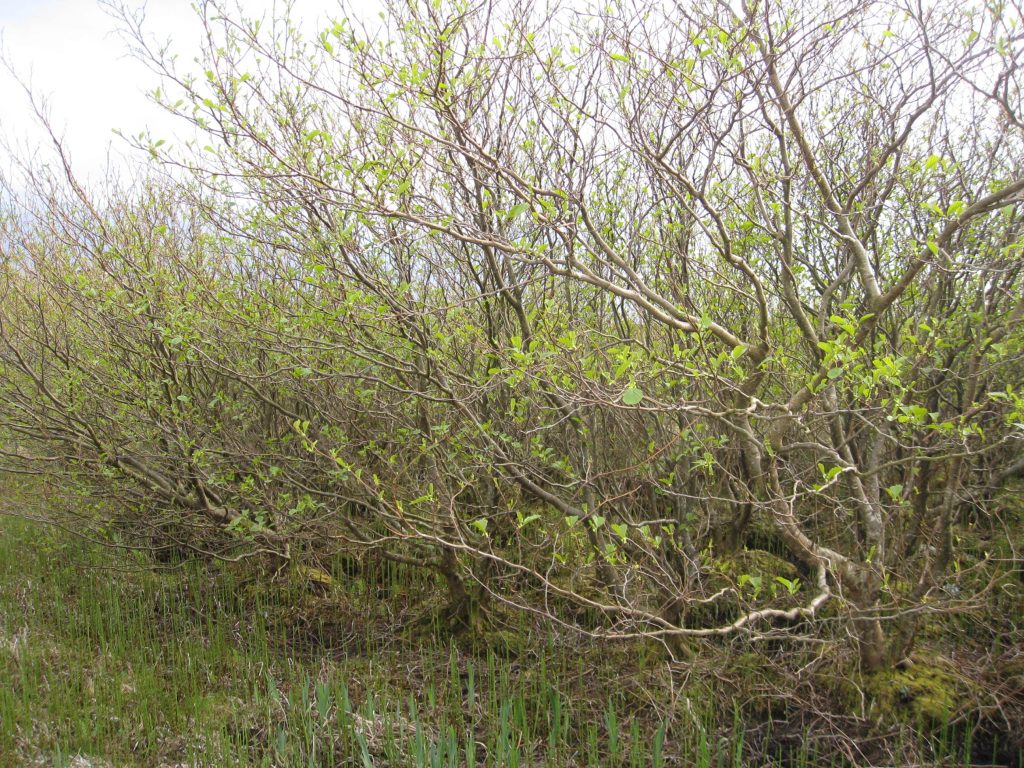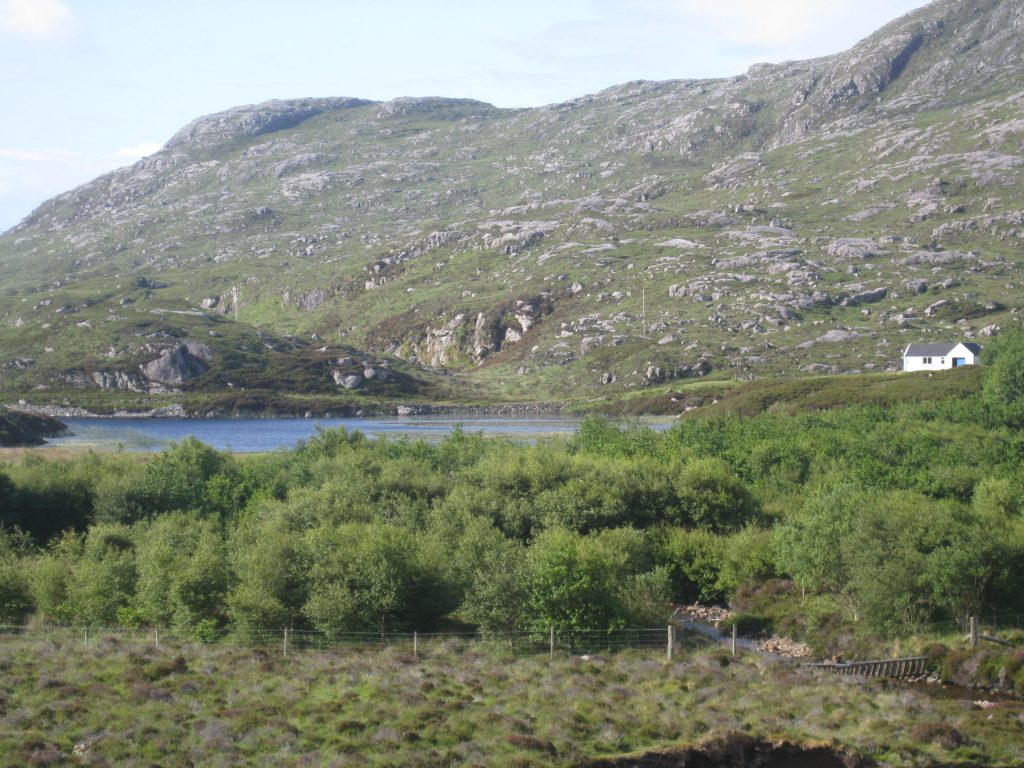On Thursday 12th December 2019 a good number of people assembled in the Dark Island Hotel to hear a talk by Viv Halcrow, the Woodland Trust’s Croft Woodland Project Officer for the Western Isles.
The Project started in 2016 in all the crofting counties, and in the Outer Hebrides is funded by the Point and Sandwick Trust, with support from Scottish Forestry and the Scottish Crofters’ Federation. Funding for the scheme is now secure until 2026.
Viv provides advice and practical help, including getting funding for planting schemes. The Outer Hebrides has seen the greatest number of enquiries, with at least 450 since the project began, resulting in more than 90 schemes started, of varying size. By April 2020 just over 100,000 trees should have been planted in over 31 hectares.
Viv went on to list the main reasons for planting trees: to shelter buildings, gardens, livestock or crops; to improve soil by raising deep nutrients nearer the surface and depositing leaf litter; to add variety to the landscape; to provide habitats and food for wildlife; for fuel; and for craft purposes, particularly willow.
Locations need careful consideration; trees won’t grow on deep peat [planting should not be attempted anyway as peat stores carbon] and should not be planted on machair; in between, they will do best when they have some shelter from the immediate topography, and a good depth of reasonably fertile soil (at least a foot – or 30 centimetres). Water pipes, electricity cables both underground and overhead should be avoided, and sites designated for particular natural features or archaeological remains may not be suitable for planting.
Native species are most appropriate, and ideally of local provenance or as near as possible: grey willow, eared willow, downy birch and alder; and other local species are aspen, hazel, hawthorn, bird cherry, sessile oak and rowan. Non-native trees that will grow are sycamore, which is resistant to salt, other types of willow, lodgepole pine and Sitka spruce. Shrubs with waxy leaves that are resistant to drying in strong winds are escallonia and olearia, which can be grown for shelter round plantations.
Some tree nurseries are now getting under way in Lewis at Leurbost and near Shawbost, and one in the Bays of Harris, growing trees from locally collected seed.
Planting involves design of the scheme, neighbour consultation, fencing (including deer fencing in many places) ground preparation and fertilising. Once the trees are planted they may need protecting against rabbits and, in Uist, voles. Planting at a high density with seedlings just 1 or 1½ metres apart is recommended, and the grants support this density. Ideally a scoop of soil is removed and turned over to provide a low mound with no other plants around the newly planted tree, so no competition for light and nutrients.
Maintenance is essential: weeding, and/or mulching around the trees; replacing trees that fail, topping up fertiliser, repairing fencing if necessary, and checking for browsing damage, including by caterpillars which can defoliate the trees. Mulches should be organic material that will gradually decompose and add to the soil; cardboard, paper and sheep wool are all suitable materials. If there is a long dry spell ideally the trees should be watered if possible; mulches help to retain the moisture in the soil as well as discouraging weed growth.
There are grants available:
- MORE woods provides a 60% grant for a minimum of 300 native trees, under a twelve year agreement, but this does not include money for labour, fertiliser or fencing.
- The SRDP Forestry Grant Scheme provides £3600 per hectare for between ¼ and 3 hectares of planting, with an additional allowance for fencing, tree guards or netting, gates and a management grant for five years. This is under a twenty year contract. A CAGS shelterbelt grant is available for fencing and shelterbelts for horticultural businesses or for shelter of livestock.
More information can be found on the Point and Sandwick Trust website where you can see a map of schemes already planted, (one of the largest in Uist being in Grimsay with over 5,000 trees), the Woodland Trust website, or ‘Facebook’ under ‘Western Isles Trees on the Croft’ or get in touch with Viv by e-mail: vivhalcrow@woodlandtrust.org.uk.

